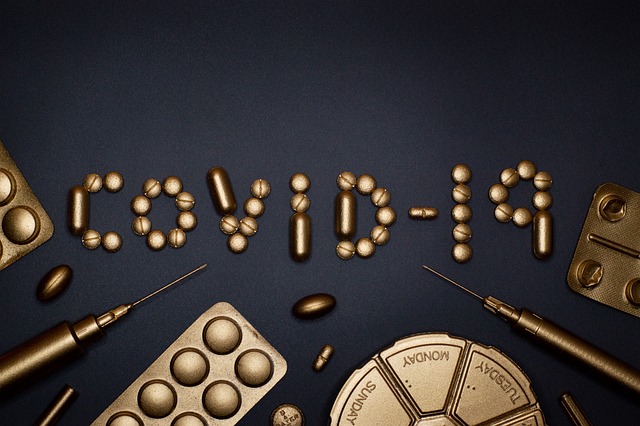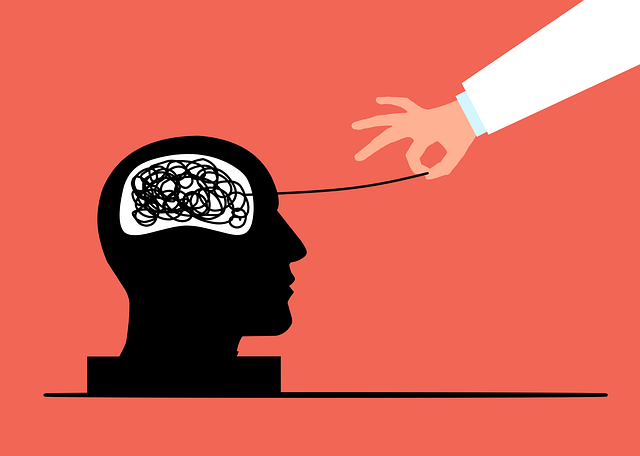Behavioral Activation Therapy (BAT) is an evidence-based depression treatment program that focuses on increasing engaging activities to disrupt negative cycles and foster positive emotions. Unlike traditional talk therapies, BAT encourages individuals to participate in enjoyable activities despite lack of initial motivation, aligning them with personal values to rewire the brain's reward system. This unique approach proves effective for diverse needs, complementing cognitive-behavioral therapy (CBT), mindfulness practices, and medication management within depression treatment programs. Through structured goal setting, personalized planning, and regular monitoring, BAT offers a holistic solution for long-term mental health management.
Behavioral Activation Therapy (BAT) offers a unique approach to combating depression by focusing on an individual’s daily activities and environment. This therapeutic method aims to help patients understand how their behaviors impact mood, encouraging them to make positive changes. Unlike traditional talk therapy or medication-only treatments, BAT prioritizes practical strategies for increasing engagement in meaningful activities, thereby boosting motivation and reducing symptoms of depression. Discover how this evidence-based practice differs from other depression treatment programs and its real-world applications.
Understanding Behavioral Activation Therapy (BAT): A Brief Overview

Behavioral activation therapy, or BAT, is a form of evidence-based psychotherapy designed to help individuals suffering from depression and other mental health conditions. At its core, BAT focuses on encouraging patients to engage in activities that bring them pleasure, purpose, and meaning, ultimately improving their overall mood and well-being. This therapeutic approach emphasizes the connection between behavior and emotional states, recognizing that by changing one’s behaviors, one can significantly impact their feelings and thought patterns.
Through a structured process, BAT guides individuals to identify and prioritize activities that align with their personal values and goals. Therapists work collaboratively with clients to develop a personalized plan, setting achievable goals and providing support as the individual gradually increases their engagement in enjoyable and meaningful pursuits. This active approach promotes a sense of accomplishment, fosters positive emotions, and breaks the cycle of withdrawal often associated with depression, making it an effective component of comprehensive depression treatment programs.
The Core Principles and Concepts of BAT

Behavioral activation therapy (BAT) is a form of cognitive-behavioral therapy focused on increasing engaging and enjoyable activities in order to reduce symptoms of depression. The core principle revolves around the idea that people with depression often become less active and isolate themselves, leading to a negative cycle that exacerbates their condition. By encouraging individuals to participate in activities that are meaningful to them, BAT aims to disrupt this cycle and foster positive emotions.
The key concepts include identifying and prioritizing personal values, engaging in activities despite initial lack of motivation, and structuring the day with structured but flexible routines. This approach emphasizes the importance of behavior as a crucial target for treating depression, complementing traditional cognitive therapy by addressing the need for practical strategies to implement changes. BAT is tailored to each individual’s needs, making it an effective component in comprehensive depression treatment programs.
How BAT Differentiates from Other Depression Treatment Programs

Behavioral activation therapy (BAT) stands out among depression treatment programs by focusing on a holistic approach that combines cognitive behavioral techniques with the exploration and enhancement of enjoyable activities. Unlike traditional talk therapies that often concentrate on identifying and changing negative thought patterns, BAT encourages individuals to actively engage in meaningful activities, even if they initially lack motivation. This shift in perspective empowers patients to experience a sense of accomplishment and joy, which can be a powerful antidote to depression.
What sets BAT apart is its emphasis on functional improvement through behavior change. Rather than simply discussing symptoms and emotions, BAT guides individuals to participate in activities that are aligned with their personal values and interests. This hands-on approach not only provides an immediate sense of purpose but also helps to rewire neural pathways associated with reward and motivation, making it a unique and effective depression treatment program.
The Role of Motivation in Behavioral Activation Therapy

In Behavioral Activation Therapy (BAT), motivation plays a pivotal role in facilitating effective depression treatment programs. Unlike traditional talk therapies that primarily focus on understanding thoughts and feelings, BAT emphasizes the importance of engaging in activities that can boost motivation and ultimately improve an individual’s mood and overall well-being. By encouraging patients to participate actively in meaningful activities, even when facing initial lack of interest or pleasure, BAT helps rewire the brain’s reward system, fostering a sense of accomplishment and positive reinforcement.
The therapy recognizes that individuals experiencing depression often struggle with low motivation, which can perpetuate their symptoms. Through structured steps, BAT guides patients to identify and engage in activities that align with their personal values and goals, thereby increasing their intrinsic motivation. This process not only helps in breaking the cycle of avoidance and isolation but also provides a practical framework for managing depressive symptoms by promoting behavior changes that are conducive to recovery.
Techniques and Strategies Employed in BAT

Behavioral activation therapy (BAT) is a cognitive-behavioral approach designed to combat depression by encouraging individuals to engage in activities that promote positive emotions and meaningful experiences. The core strategy involves identifying and prioritizing behaviors that have been avoided due to low mood, and gradually reintroducing them into one’s routine. This process helps to break the cycle of isolation and inactivity often associated with depression, fostering a sense of purpose and pleasure.
BAT therapists utilize various techniques such as behavior analysis, goal setting, and motivational interviewing. They assist clients in exploring and understanding their emotional responses to different activities, teaching them to recognize and challenge negative thought patterns. Through structured exercises, patients learn to replace maladaptive behaviors with more adaptive ones, ultimately enhancing overall well-being. These strategies are tailored to individual needs, making BAT a flexible and effective component of depression treatment programs.
Implementing BAT: A Step-by-Step Guide for Clinicians

Behavioral activation therapy (BAT) offers a structured approach to depression treatment programs, guiding clinicians through a series of steps to help individuals take action and find meaning in their daily lives. The process begins by assessing the person’s current activities, identifying areas where they might engage in more rewarding behaviors, and setting achievable goals. Clinicians should collaborate with clients to develop personalized activity schedules, focusing on meaningful actions that align with their interests and values.
Next, therapists assist clients in implementing these plans while teaching them to monitor their mood and behavior changes. Regular sessions facilitate problem-solving and coping strategies to overcome barriers. Over time, clinicians gradually help individuals generalize these skills to various settings, promoting sustained engagement in activities that foster a sense of purpose and well-being. This step-by-step process ensures a structured yet flexible framework for effective depression treatment.
Benefits, Efficacy, and Research Support for BAT

Behavioral activation therapy (BAT) offers a unique and effective approach to treating depression by focusing on increasing engaging activities and experiences, ultimately improving mood and well-being. One of its key strengths is its ability to empower individuals to take control of their symptoms through structured yet flexible goal setting and activity scheduling. This proactive strategy not only helps manage depressive episodes but also prevents their recurrence.
The research backing BAT is substantial and growing. Numerous studies have demonstrated its efficacy in reducing depression symptoms, with some trials showing comparable or even superior results compared to other evidence-based treatments like cognitive behavioral therapy (CBT). The strength of BAT lies in its ability to target specific behaviors, making it a highly personalized treatment that can be adapted to individual needs and preferences, including those who may not respond well to traditional talk therapies.
Integrating BAT with Other Therapeutic Approaches

Behavioral activation therapy (BAT) is a powerful tool that can be integrated with other therapeutic approaches to enhance depression treatment programs. By combining BAT with cognitive-behavioral therapy (CBT), mindfulness practices, or medication management, therapists can create a comprehensive and tailored care plan for individuals struggling with depression. This multimodal approach leverages the strengths of each method, offering patients a more holistic and effective support system.
For instance, integrating BAT with CBT allows therapists to focus on both the thoughts and behaviors that contribute to depressive symptoms. While CBT helps individuals identify and challenge negative thought patterns, BAT encourages engagement in activities that promote pleasure and meaning, fostering a positive feedback loop that can significantly reduce symptoms of depression over time. Such an integrated approach ensures that patients receive a well-rounded treatment that addresses cognitive, emotional, and behavioral aspects of their condition, ultimately enhancing the chances of long-term recovery.
Real-World Applications and Success Stories of BAT

Behavioral activation therapy (BAT) has proven effective in treating various mental health conditions, particularly depression. Its real-world applications are vast, with numerous success stories emerging from clinical settings and research studies. One of the key strengths of BAT lies in its ability to empower individuals by teaching them to identify and engage in activities that enhance their mood and overall well-being. This therapy encourages patients to actively participate in enjoyable and meaningful activities, thereby counteracting the effects of depression and promoting positive behavioral changes.
Success stories of BAT are abundant, with many individuals reporting significant improvements in their symptoms and quality of life. Depression treatment programs incorporating BAT have shown promising results, especially when combined with other evidence-based practices. These programs often include personalized activity plans, cognitive reframing techniques, and regular monitoring to ensure the intervention remains effective over time. By combining behavioral strategies with therapeutic support, BAT offers a practical and sustainable approach to managing depression, offering individuals practical tools to maintain their mental health in the long term.
